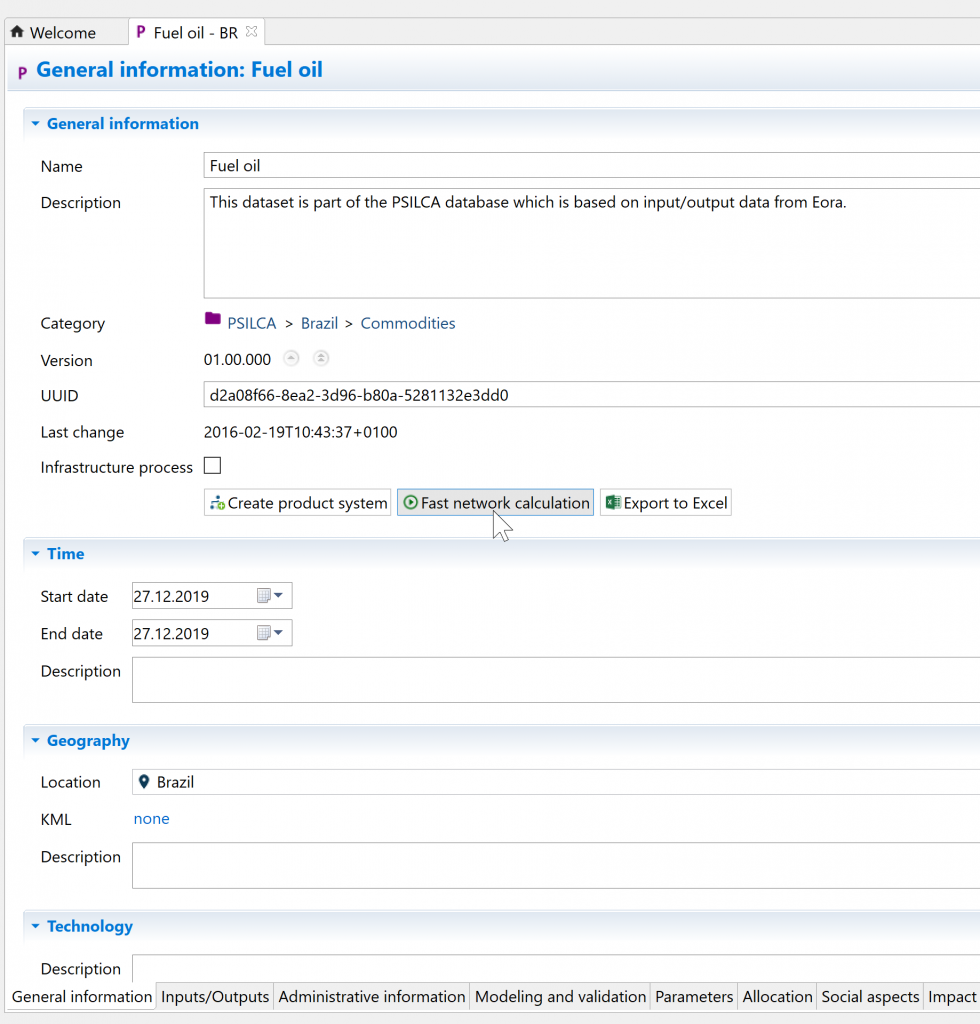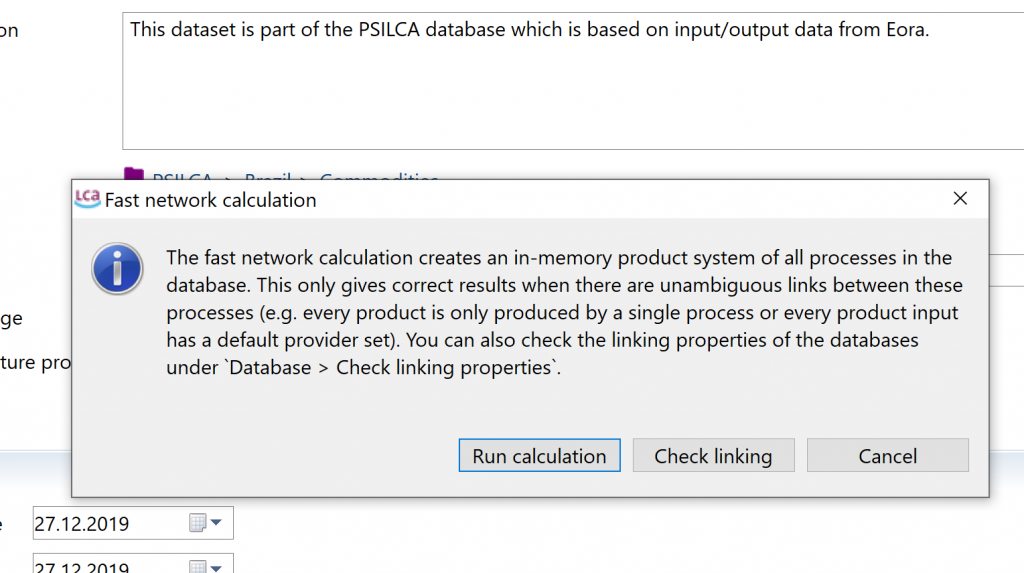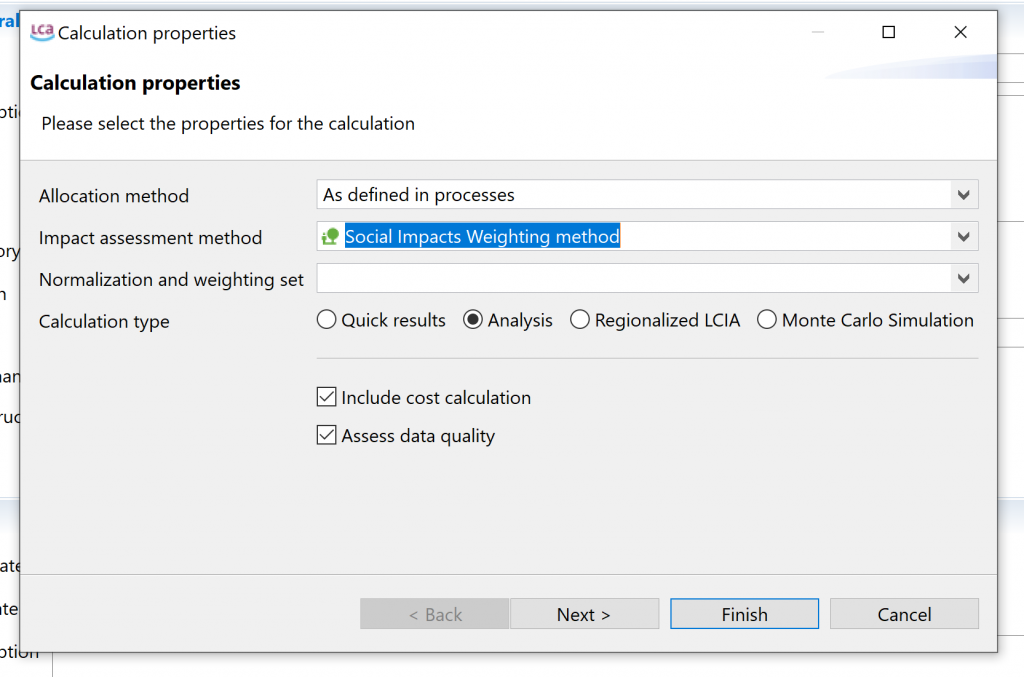Since the beginning, openLCA has product systems which are basically life cycle models, and allows users to inspect and change these, and also create them from scratch. We think this is an important element in LCA modeling, and makes it more transparent.
However, sometimes, a database already contains all the links that need to be set in a product system. In these cases, an inventory and LCIA result can be calculated directly from one single product. More precisely, this is the case if, for the selected process, all products in the supply chain have only one provider process, or if for those cases where multiple provider processes exist, a provider process is specified in the respective input output sheet in the process editor. We call this unambiguous links.
In 1.10.2, we implemented a “fast network calculation” which calculates the inventory without creating a product system first. To prevent misleading calculation results, it is checked before the calculation whether the database satisfies the condition of unambiguous links. Especially for databases which create product systems with many interconnections, i.e. IO databases, this saves a lot of memory.
I will show an example for the PSILCA Developer database:
Starting from the process “fuel oil, Brazil”

There is now a button “fast network calculation”, which starts the fast network calculation, and does not create a product system (which is still available, as other option). When I select it, a short message pops up with the option to check the linking properties or to start the calculation..

The linking properties should always be checked for a database, but evidently when you calculate multiple processes from the same database, a check each time is not necessary. Since I use the calculation now for the first time, I press on “check linking “, and after a while (literally seconds for ecoinvent, 2 minutes for the PSICLA developer database), I receive the message that the linking is unambigous and thus ok for this calculation.

I then start the calculation, now I am again in the same dialogues and procedure as if calculating results for a product system.

As expected, the calculation takes some time, even a bit more than when starting from a product system, but it uses now, for the untruncated, full PSILCA developer database, about 20 GB of RAM, which is still a lot but much less than when creating a product system in addition for the PILCA developer database – which takes about 100 GB.

So, in summary, the fast network calculation is good if you do not need to edit the product system and has very positive effects on memory demand for calculating densily populated, heavily interconnected systems typical for IO databases; it assumes unambigous links for the calculated system, which can and should be checked before starting the calculation. Calculation options and results are the same as when calculating results from a product system.
We hope you enjoy this new feature and are happy about feedback, as always.

